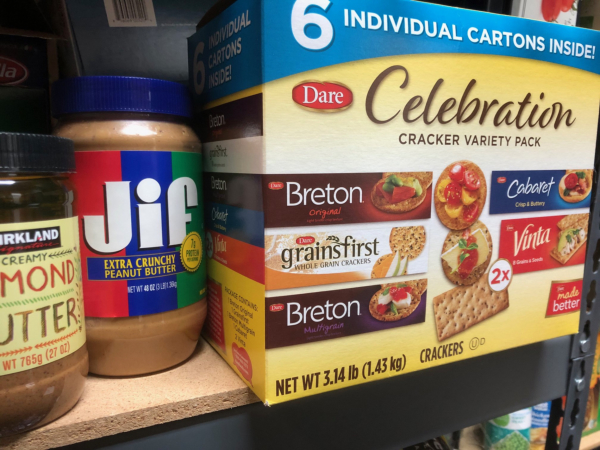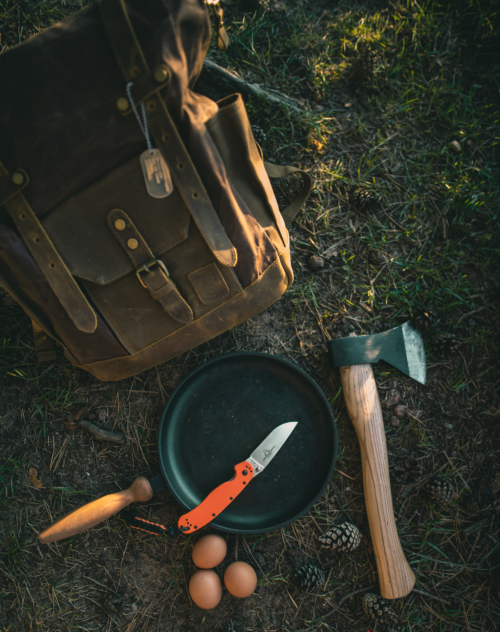We believe in the layered approach to prepping, a term we have coined. The layered approach relies on having multiple ways to accomplish something, which automatically provides redundancy and a fall back plan. The layered approach to prepping gives you options rather than a single solution.
It also allows you to build up your preps over time. Let’s assume you are just starting to prep and you have allocated a budget $100 a month. The first month you can buy canned food, dried food and a couple cases of bottled water. Hurrah! That’s your first layer and you have accomplished something
Next month, you can buy a high-quality water filter, which is layer two. The third month, you buy a food dehydrator and a bushel of apples to dry. The water filter and bottled water are two layers. The food and dehydrated apples are layer two for food.

Further down the road – and it could be months or years depending on your priorities and your resources, you could add rain barrels to your gutter downspouts to capture water, or get chickens to help enhance your food supply. Even when you add new layers, the old layers are still there and remain useful. The layered approach is additive and works well for someone who sees prepping as a journey rather than some who thinks being prepared means spending $3,500 on somebody else’s idea of the food you should buy.
The layered approach also allows you to change and evolve. As your prepping journey continues and your needs change, as the number and age of people you prep to protect change, you can add new layers.
Concentric Layers
To protect your retreat and your valuables, you have installed sturdy doors and locks, that’s the inside layer. You also have a large dog that barks if he hears anyone approach. They make up the inside layer. Outside, you have solar-powered, motion-sensitive lights in key areas to potentially scare off intruders but also to alert you to their presence, that’s the next layer. At the entrance of your driveway, you have a locked gate and a driveway alarm so you know if anyone pulls up to it. That’s the third layer of home security. Any one of them can make an intruder think twice, but taken together they are more powerful than alone. That is also part of the value of the layered approach to prepping.
In a SHTF situation, you add a few extra layers to your security. At least once a day, you take the dog and a rifle and patrol the perimeter of your property, then walk down and check in with your nearest neighbor. You have built a bunker on the hill behind the house that allows you to look down, identify and engage at any aggressors who approaches from three directions. You can leave a lookout up there if you need to. Behind the bunker you have a few booby traps to make sure no one can sneak up on you. Inside the house, two adults are armed, one with a 12-gauge shotgun and the other with an AR-15. Both also carry pistols. That’s the final layer, the one you hope you don’t need,
Multiple Redundancies

Some people look at redundancies as having more than one of their preps, which follows the old “One is none and none is one” rule.
In other words, if you determine that having a pocket knife is important, then a prepper should have two or more, in case one breaks, is lost or is loaned to someone else. The layered approach takes that and goes one step deeper. If you have a pocket knife and a spare, you might also have a fixed-blade knife, a machete, a hatchet or an axe.
When you look at cutting from a broader perspective, you might have other options, from a bow saw to a chain saw to a battery powered circular saw. You might have a scythe or a sickle. This allows you to use the most appropriate tool at hand, knowing that you have other options. If you lose a knife, you have another, but you also have a bigger one for a bigger job. If you run out of gas for the chainsaw, you have an axe and the bow saw.
Another benefit that layering your preps gives you is that you can use the best tool and consume the least resources necessary. For example, if you need to remove a sapling, don’t waste the gas by starting the chainsaw when a quick chop from an axe or machete might do the job.
Let’s say you have spent all day hunting deer. Much of the game has been hunted out, so you never see one, but on the way home you spot a large rabbit that would make a great dinner. You could shoot it with the .30/30, but that might be overkill and cause a loss of meat. Instead, you draw your .22 revolver, carefully pull back the hammer, aim, and CRACK: You have meat for the stew pot.
There are people that will argue that having a carbine and a pistol that fire the same caliber makes a lot of sense logistically. For example, you could have a Glock pistol and a Sub 2000 carbine that use the same magazines and ammo, or a lever action and a revolver that both shoot a .357. But while logistics is important for storing or transporting ammo, it ignores the benefit that carrying a rimfire cartridge for harvesting small game and a large centerfire cartridge for big game, depending on what you see. If you are going into battle, it makes sense that everyone should be able to share ammo and magazines. If two of you are going to hunt game, it may make sense for one guy to carry a shotgun and a number of different shells and the other a rifle. Layering can give you that option.
Our Philosophy
As stated in our philosophy, prepping is a journey, not a destination. Take the layered approach, make small steps, and you will find you are making progress. Every single prep you buy or make, every experience or piece of knowledge you gain, takes you one step further on your journey.
I’ve been prepping for more than 25 years. There were years I focused on food, years I focused on guns and ammo, years I focused on building skill, and years where work or family or life’s tragedies consumed me and I did very little prepping. But many of those early layers are still there, and the journey continues. May yours do so as well.

